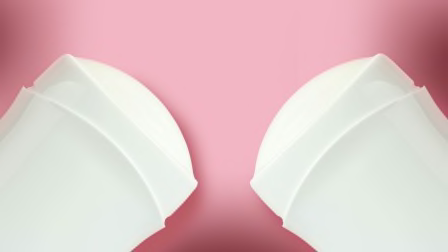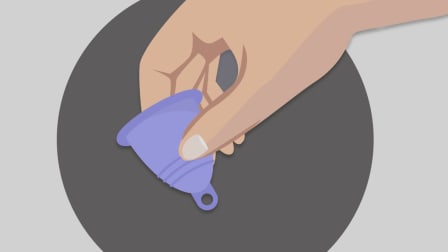What to Do If You Can’t Find Tampons
During the ongoing tampon shortage, consider other brands or options like menstrual cups and period underwear

People around the U.S. are reporting difficulty finding tampons, likely the result of ongoing supply chain shortages. Data on how many people use tampons are murky, but it’s clear the shortage is disrupting the monthly routines of millions.
“If 70 percent of U.S. menstruators use tampons, that’s 70 percent of menstruating people who are at risk of not getting the things they use to keep their lives in order every month, and that’s a big deal,” says Katharine White, MD, an OB/GYN at Boston Medical Center and associate professor of obstetrics & gynecology at the Boston University School of Medicine.
Buy Another Tampon Brand
Luckily, there’s usually not a medical reason to use one type of tampon over another. It really boils down to personal preference, says Lauren Streicher, MD, clinical professor of obstetrics and gynecology at Northwestern University Feinberg School of Medicine and a physician at Northwestern Medicine.
You may be fiercely loyal to a certain tampon brand, but now’s a good time to consider new products. For example, if you rely on a cardboard or plastic applicator, don’t be afraid to try an applicator-free option. Simply follow the instructions on the box if you’re not used to it. “Basically, if you can put your finger in your vagina, you can put any tampon in,” says Streicher.
She says the worst that can happen is the tampon won’t go in far enough, which feels uncomfortable, but there’s no such thing as pushing it in too far.
Consider Using Pads
Pads can also stand in for tampons, as long as you’re comfortable wearing them. Aside from people who have health conditions affecting their vulva, which may result in sensitive skin, Streicher says anyone can use a pad. But you may not want to wear something bulky if you frequently exercise, swim, or wear form-fitting clothes.
If you prefer tampons, Streicher recommends stretching your supply by wearing a tampon during the day and a pad at night.
Try Period Underwear
Period underwear, which is designed to be absorbent and reusable, is a less bulky alternative to a traditional pad. Some people prefer them because they’re more environmentally friendly than disposable products. But White says they may not always offer the same absorbency as tampons, so they may be better for light-flow days.
Reusable period underwear can be expensive, up to $40 for a pair, so White recommends researching brands (or asking friends for recommendations) before investing in your own. In 2021, Consumer Reports evaluated five different period underwear brands; see our evaluation of period underwear from Dear Kate, Knix, Modibodi, Thinx, and TomboyX.
Use a Menstrual Cup
Another eco-friendly option is the menstrual cup or disc. These are silicone, rubber, or latex devices that can be worn inside the vagina for several hours before you empty, wash, and reinsert. Just as with tampons, they come with a small but real risk of toxic shock syndrome, research has shown.
While many users find them comfortable and reliable, these products come with a learning curve. If you’re used to tampons, Streicher says it can be tough to nail how to place the cup or disc over your cervix.
Practice inserting the cup or disc when you’re not on your period to get used to it—a bit of lube on the outside may help, suggests White. “Anyone can learn to do it, but you have to have a comfort level putting your fingers in and getting it in the right place,” Streicher says. “Once you master it, it’s a very medically safe thing to do.”
Trade With Friends
You can also ask around your personal network to see if anyone has tampons they’re not planning to use—perhaps a friend who is pregnant, takes birth control and doesn’t get a period, recently went through menopause, or has already switched to another product has a backup supply they’d gladly share.
Either way, don’t be afraid to use old tampons. Most packages have expiration dates, but Streicher says those don’t indicate medical safety. As long as tampons are wrapped, in a box, and stored under normal conditions, they should be safe to use.
Skip Your Period
If you’re on a form of hormonal birth control, such as the patch, ring, or pill, Streicher says there’s no medical reason to get your period each month, especially if you’re worried about the tampon shortage.
“If you’re using hormonal contraception, [you can] stop using those placebo days and go straight through,” she says. Speak to your medical provider so they can weigh in and prescribe extra birth control pills if needed.
Don't DIY
Some devoted tampon users are using sponges, gauze, or knit material if they can’t find their usual tampons. White advises against creating your own tampons, which may not be absorbent or safe to use. DIY products may break down inside of you during use, for example.
“If fibers are left behind, that can be a source of infection,” White says. “Please don’t put those things in your body if they have not been tested for that purpose.” Instead, try some of the above tips to bridge the gap until your preferred products are readily available.


















